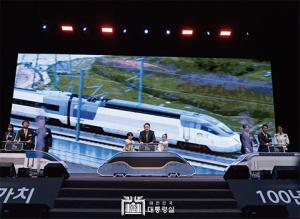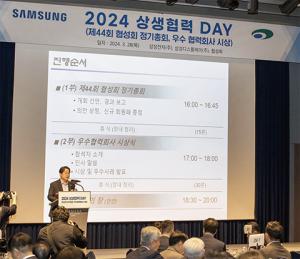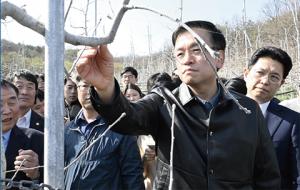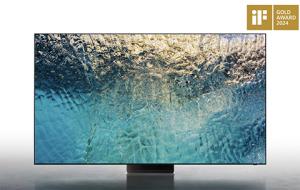 |
| ▲ 한남대학교 미생물 분류 및 생태학 연구실 박진숙 교수 |
자원의 보고라 불리는 ‘바다’. 지구 표면적의 70.8%를 차지하고 있는 바다에는 그 크기만큼이나 다양한 생물들이 살고 있다. 지금까지 알려진 해양생물종만 해도 약 22만 종에 달하며, 아직 알려지지 않은 것까지 합하면 100만 종 이상에 이를 것으로 추정되고 있다. 그리고 이중 무게로 따졌을 때 90%에 가까운 비중을 차지하는 것이 바로 ‘해양미생물’이다.
공생미생물 유용물질 연구, 상호관계 규명과 보존·분양 기술 개발
전 세계 생물종의 80~90%는 바다에 살고 있다. 크기가 수십 미터에 달하는 거대한 고래부터 눈에 보이지 않는 작은 미생물에 이르기까지, 바다가 품고 있는 세계는 아직도 무한히 넓게 펼쳐져 있다. 이에 전 세계에서는 해양생물자원을 이용한 화학, 소재, 에너지 제품 생산에 막대한 투자를 계속하고 있다. 무한한 가치를 지닌 바다에서 미래의 희망을 찾고 있는 것이다.
한남대학교 생명시스템과학과의 박진숙 교수는 바로 이러한 해양생물자원, 그 중에서도 해양무척추동물의 ‘공생미생물’에 대한 연구에 주력하고 있다. ‘공생미생물’이란 숙주와의 협조관계 속에 다양한 생리활성물질을 생산하는 미생물로서, 해면동물 등 해양무척추 동물로부터 획득 가능한 항바이러스 활성물질, 항암 활성물질, 면역제어제, 항염증물질 등의 유용물질들이 바로 이 공생미생물로부터 유래된 것으로 보고되고 있다. 박 교수는 “공생미생물은 앞으로 해양생물자원 활용 단계에서 중요한 소재로 부각될 것입니다. 실제 국내·외에 걸쳐 공생미생물에 대한 연구가 크게 증가하고 있으며, 앞으로 다양한 유용 공생미생물을 확보하고, 이들을 전문적으로 보존·관리하는 것은 매우 중요한 기반연구가 되리라 생각합니다”라고 설명했다.
이에 박진숙 교수는 ‘미생물 분류 및 생태학 연구실’을 운영하면서 해양공생 미생물의 다양성 및 신종 발굴 연구와 해양성 미생물의 색소 산업화 연구를 수행하고 있다. 여기서 문제는 공생미생물의 대부분이 숙주 특이성 등의 특징을 가진 ‘난배양성 미생물’이라는 점이다. 실제로 현재까지 알려진 해양미생물 가운데 배양이 가능한 미생물은 1%에 불과하다는 것이 학계의 공통된 의견이다.
이에 연구팀에서는 해면동물과 공생미생물의 상호 작용에 대한 이해를 위해 배양 및 비배양 분석방법을 통하여 해면공생 미생물의 다양성 및 신종 발굴 연구를 수행하고 있으며, 특화된 관리기법의 개발을 통한 종자원 확보와 안정적 보존 및 분양을 수행함으로써 우리나라 해양생명공학 사업의 활성화에 기여하고자 노력하고 있다. 그리고 지난해 11월, 개교 60주년 기념으로 열린 ‘2016 한남의 날’ 행사에서 박진숙 교수는 연구업적이 뛰어난 교수에게 수여되는 ‘한남학술상’을 수상했다.
“해양생물자원의 가능성, 국가경쟁력 확보의 밑거름 될 것”
박진숙 교수는 1990년 한남대학교에 부임한 이후, 10년 이상 해양공생미생물에 관한 연구에 매진해왔다. 그는 “해양생물자원을 이용한 차세대 신물질 개발의 가치는 전 세계적으로 약 26조 달러에 이르는 것으로 조사된 바 있습니다. 그러나 최근의 기후변화와 무분별한 남획, 환경오염 등에 의해 개체수가 감소하고 있는 해양생물을 지속적으로 채취해 자원화하는 것은 생태계 파괴라는 문제를 야기할 우려가 있습니다”라고 지적했다.
이에 대한 대안으로 그가 주목한 것이 바로 공생미생물이었다. 보존 및 배양을 위한 최적의 조건을 찾아 대량배양이 가능해진다면 다른 무엇보다도 유용한 바이오자원으로서의 역할을 다하게 될 것이라는 게 그의 생각이다. 또한 그는 공생미생물에 대한 연구 뿐 아니라 해양환경에 서식하는 호염미생물 등의 분류 및 진화적 계통에 대한 연구와 DNA를 이용한 Pyrosequencing, DGGE(Denaturing Gradient Gel Electrophoresis), RFLP(Restriction Fragment Length Polymorphism) 등과 같은 분자적 방법과 화학적 분류학방법을 이용한 연구, 미생물들의 실물 및 DB를 작성해 보존·관리하는 작업을 수행하고 있다.
한편, 일본 동경대학교에서 미생물분류학을 전공한 박 교수는 일본산업과학기술종합연구소(AIST), 일본 화학연구소(RIKEN)에서 연구를 수행한바 있으며, 학술진흥재단 자연과학분과위원, 환경기술평가심의위원회 위원, 국가과학기술위원회 전문위원, 기획재정부 국가연구개발 예산협력 위원 등을 역임하기도 했다. 그리고 현재는 한남대학교 중앙도서관장으로서 후학 양성에도 힘을 쏟고 있다.
박 교수는 “해양생물은 지금까지 우리가 알고 있던 그 이상의 기능을 가지고 있으리라 생각합니다. 특히, 원양, 심해저, 열수분출구 등 접근하기 어려운 환경에 서식하고 있는 공생미생물의 경우 그 특수성만큼이나 놀라운 기능을 발견할 수 있을 것입니다. 앞으로 보다 많은 이들이 생명공학 소재의 중요성을 인식하고, 생물자원의 확보, 관리 등의 인프라 사업에 적극적인 관심과 지원이 이어지길 바랍니다”라고 밝혔다. 또한 이에 덧붙여 “현재 생명자원 분야의 분류전문가들이 줄어들고 있습니다. 해양생물자원이 각 국가의 중요한 자산으로 인정받고 있는 만큼 앞으로 이를 적극적으로 연구 및 활용할 수 있는 전문 인재의 양성이 반드시 필요합니다”라고 당부했다. 인류의 미래를 여는 열쇠는 ‘바다’에 있다. 해양생물자원의 바이오산업화를 위한 이들의 노력이 21세기 해양강국으로 나아갈 대한민국의 초석이 되길 기대한다.
Prof. Park Jin-sook of Hannam University Microorganism Taxonomy & Ecology Lab
Limitless possibility of the sea paves way for future bio industry
Powering ‘symbiotic microorganism research’ of Korea
It is reported that 80% to 90% of species on earth live in the sea. From huge whales to invisible microorganism, the sea embraces a limitless possibility of the world unexplored. This is the reason that the civilizations on the surface of the earth are pouring massive money on making chemical, material and energy products from the marine resources. Prof. Park Jin-sook of Hannam University Microorganism Taxonomy & Ecology Lab also is one of those but with particular attention to ‘symbiotic microorganism’ of marine invertebrates. Symbiotic microorganism is a microorganism that produces various bioactive substances in the cooperative relationship with the host. It is reported that antiviral active material, anticancer active material, immunodepressant and anti-inflammatory matter that can be acquired from marine invertebrates might have originated from symbiotic microorganism. “Symbiotic microorganism will be an important new matter in the application phase of the marine resources as there is a sharp increase in number of the related researches at the moment. Securing useful symbiotic microorganism and its preservation and management, therefore, is a very important base research” explains Park. The notable characteristic of the most symbiotic microorganisms, Park says, is that they are ‘nonculturable microorganism’. It is known in the academic world that only 1% marine microorganism can be cultured. So the lab uses both culturable and nonculturable analysis methods to find variety and/or new species of symbiotic microorganisms and their preservation and management. In recognition of her contribution and achievement, Hannam University awarded her ‘Hannam Academic Excellence’ on ‘2016 Hannam Day’, on the occasion of the 60th anniversary of the university.
Marine resources for securing next generation national competitiveness
Having worked for many years at Hannam University since 1990, Park has poured most of her passion to marine symbiotic microorganism research (more than 10 years). “The value of developing next generation new matters is estimated to be around 26 trillion dollars. But the issues on climate change and thoughtless overfishing is worrying both the scholars and the governments. So I thought that symbiotic microorganism might be a good alternative for it does not need to destroy the environment. It will greatly contribute to useful bio resources if we can find optimum culture and preservation conditions that will enable a mass culture.” Apart from her actively symbiotic microorganism research, Park also is carrying out a number of other researches such as Pyrosequencing, DGGE (Denaturing Gradient Gel Electrophoresis), and RFLP (Restriction Fragment Length Polymorphism) and is building the data base and the preservation and management methods. Park majored in Microorganism Taxonomy at Tokyo University and did research works at the National Institute of Advanced Industrial Science and Technology (AIST) and Rikagaku Kenkyūsho (RIKEN) in Japan. When back in Korea, she served as a member of the Environmental Technology Assessment Council, of the National Science and Technology Council, and of the Ministry of Strategy and Finance in the national science department. Currently, she is serving as the director of the Hannam University Library. “Marine organisms might have more functions than we have known so far especially when it comes to the organisms in the deep down sea like the sea beds and the heat outlets. My job in this respect is to raise awareness on importance of life science while building the foundations for preservation and management of the resources. It is regretful though to witness that the number of specialists in this field is on decline but I’m sure that marine resources will contribute greatly to securing next generation national competitiveness as many advanced countries are already recognizing the marine resources as important national assets. So fostering talented young people must not be neglected.” <Power Korea> sends a message of support.
임승민 기자 press0105@naver.com







